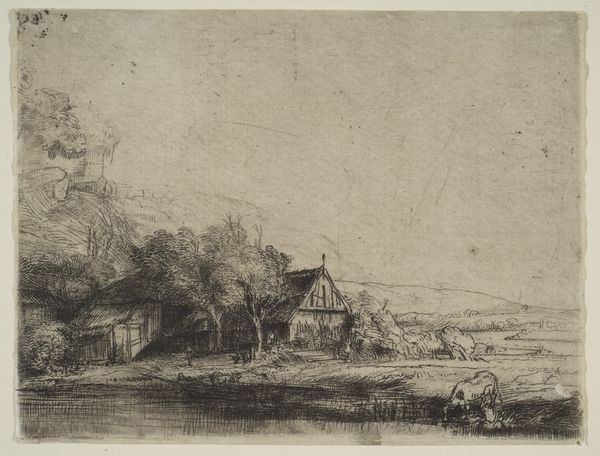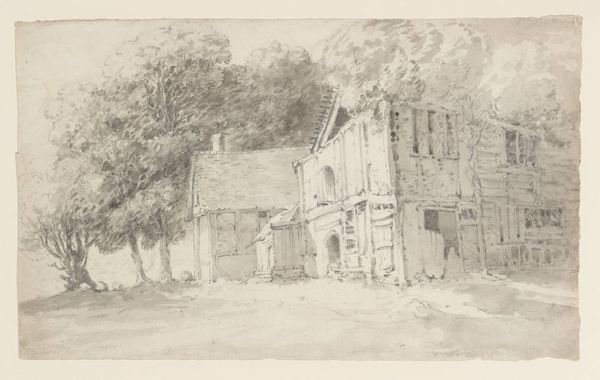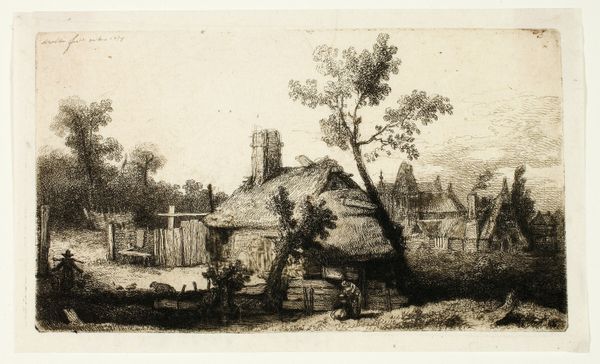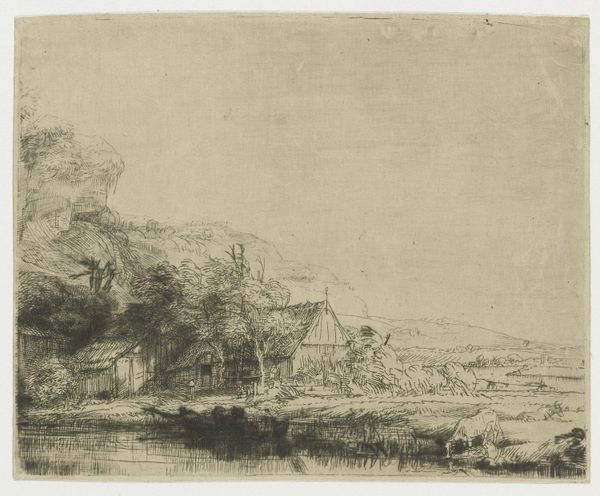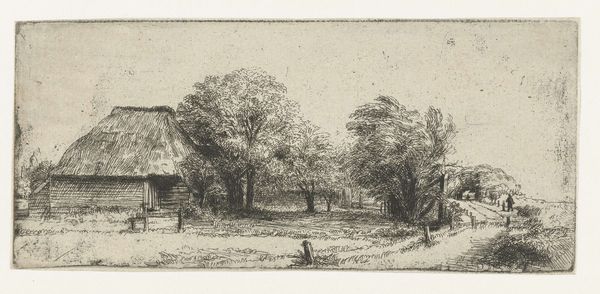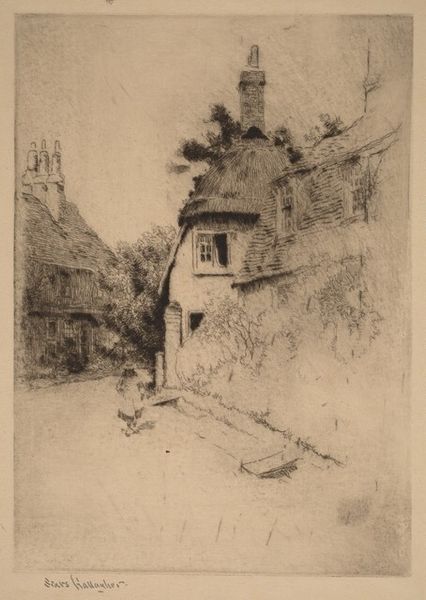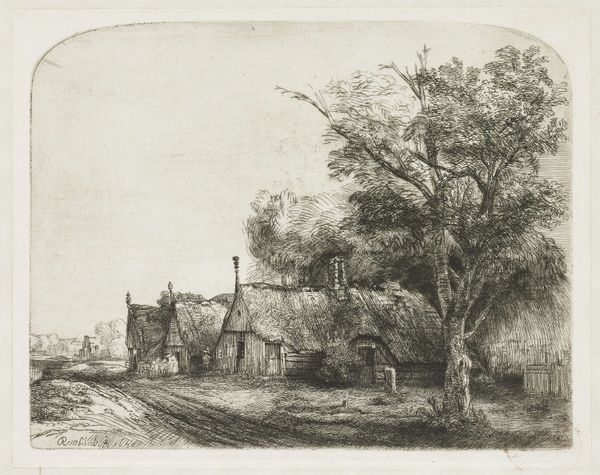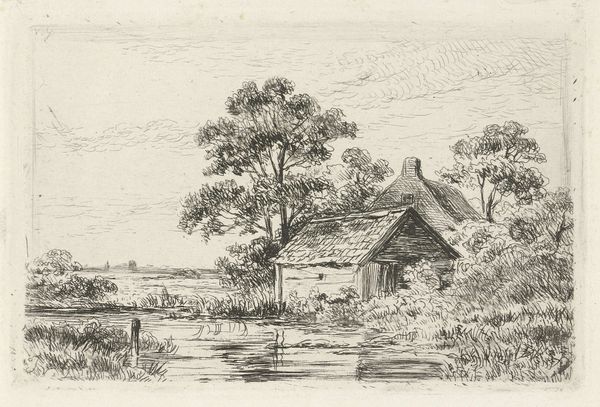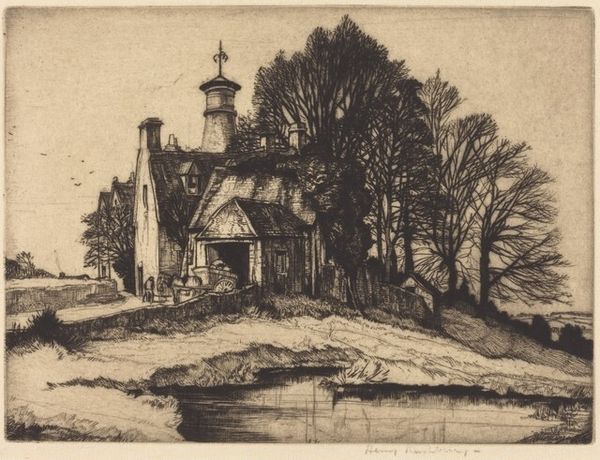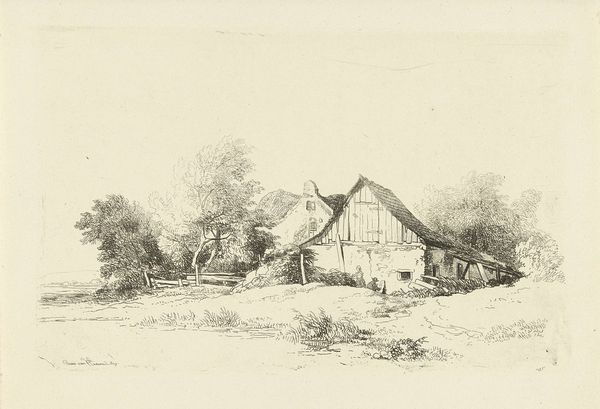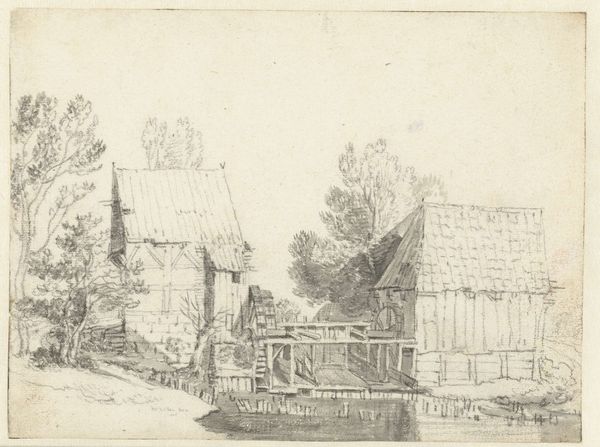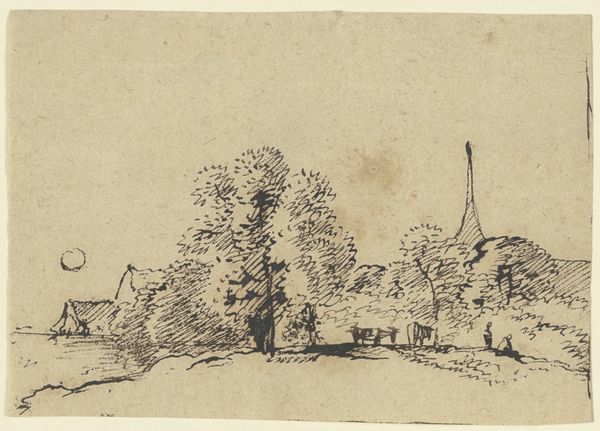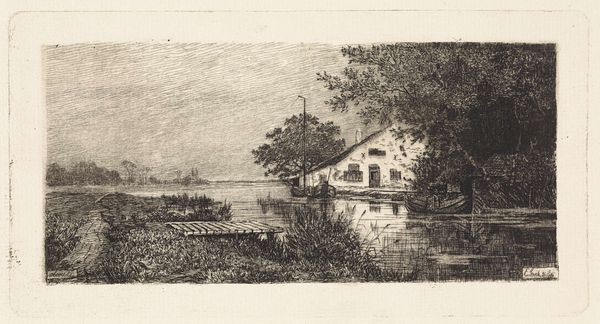
print, etching
# print
#
etching
#
arts-&-crafts-movement
#
landscape
#
realism
Dimensions: plate: 11.43 × 23.81 cm (4 1/2 × 9 3/8 in.)
Copyright: National Gallery of Art: CC0 1.0
Curator: This etching by Muirhead Bone is titled "Yorkshire Smithy," and it dates to 1905. What’s your immediate impression? Editor: Melancholy, perhaps a little faded, like a half-remembered dream of rural life. The lines are so delicate, giving a sense of quiet stillness, yet also maybe impending abandonment. Curator: Absolutely, and it's useful to think of this etching within the context of the Arts and Crafts movement in Britain. Bone, like others, was responding to rapid industrialization, and often romanticized labor as integral to identity. We see the smithy here, not just as a building, but also as a representation of skill, tradition, and community. Editor: The smoke stack stands as an explicit and evocative cultural symbol—a clear demarcation between settlement and what is unsettled, alluding to what happens at the heart of this industry. In Jungian terms, the forge is where raw materials become something transformed and potentially powerful. It sits centered within a vast emptiness and also creates an inherent sense of hope. Curator: I'm glad you pointed out that the smokestack grounds this place! Bone created this work near the turn of the century, amid significant social unrest. This particular smithy, however romanticized, shows how essential working-class trades were during this crucial time, and served as proof that laborers held considerable worth and importance within British society. This location is a visual anchor. Editor: Thinking about anchor, I notice that light also catches my eye. Although it may not seem obvious on first viewing, upon closer inspection light cascades through the field, suggesting resilience while subtly contrasting darkness cast near the smithy, hinting perhaps a complicated narrative ahead for places like this. Curator: Yes, it's important that we're both drawn to the implied narrative; the relationship between what *was* and what might *be*, how rapid technological advancement dramatically altered how a whole class identified itself. Thank you for calling attention to those details; Bone has a keen sense for representing the anxieties of that time! Editor: Indeed, analyzing the smithy as a visual motif across time, and space gives us new lenses through which one sees an unfolding dialogue with viewers even today, about heritage. Curator: This piece definitely pushes us to question labor conditions and community dynamics past and present.
Comments
No comments
Be the first to comment and join the conversation on the ultimate creative platform.
